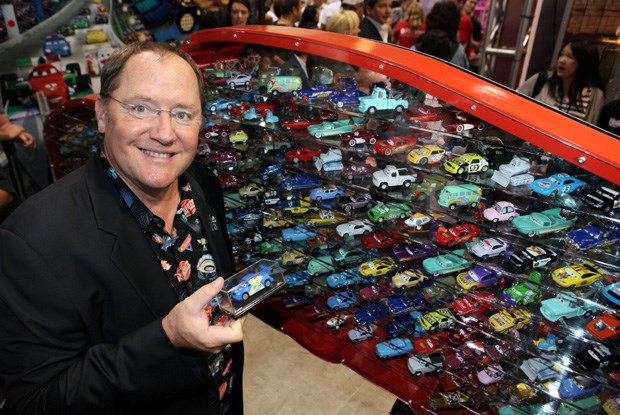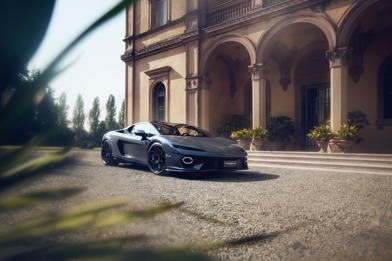Pixar's John Lasseter's heart and soul went into the movie
The fact that Cars -- the Pixar film that introduced audiences of all ages to Lightning McQueen, Mater, Sally Carrera, Luigi the Fiat 500, Chick Hicks and a host of other memorable characters -- struck such a chord with me wasn't entirely down to my love of the subject matter.
The year of its release -- a decade ago now -- also was the year my eldest son was born.
In retrospect, growing up with a dad who writes about cars for a living probably meant he had little choice in the matter but, as soon as he was old enough to comprehend colour, shape and a flatscreen TV, Cars was on high-rotate in our household.
Falling between the equally brilliant The Incredibles and critically lauded Ratatouille in Pixar's unequalled run of fine movie fare through the mid-90s, Cars appealed to anyone who loved fast metal.
Whether streamlined in 1950s finery or liveried up with Nascar colour, there was a vehicle in the movie's long list of characters that appealed to everyone.
It was a passion project for studio boss, John Lasseter, too. A car fan and collector, almost every aspect of what you see on-screen is a tip of the race helmet to real people, real places and -- oversized cartoon faces aside -- real cars. It was important for Lasseter and his team to get the look of a variety of cars -- from classic fin-adorned Americana, to rusty tow trucks of indeterminate vintage, to highway-traversing people-movers-spot on.
Because of the vagaries of animating shiny bodywork, this meant a massive upgrade to the tools Pixar was using to put its vision on the screen.
The computer system used to create Cars processed data four times faster than the system they had used only two years before for The Incredibles and -- so says the internet Movie Database -- was 1000 times faster than the servers used to create Toy Story a decade earlier.
Each frame of Cars took, on average, 17 processor hours to render.
The story focused on Lightning McQueen; a flashy, shallow Nascar hot shot vying for the championship title against a veteran racer nearing his retirement (The King) and a mean-spirited rival with his eye as much on sponsorship money as silverware (Chick Hicks, voiced by Michael Keaton).
Through a series of unfortunate events, Lightning McQueen becomes marooned in Radiator Springs -- a dusty nowhere town miles from the interstate and populated by an eccentric cast of characters, all a little cracked and faded from being in the sun too long.
It's as much a salute to the faded, forgotten glory of Route 66 as it is a paean to friendship.
The movie went on to receive two Academy Award nominations and won the Golden Globe for Best Animated Feature Film. It also helped to underline Pixar's power as a film studio with not only a unique vision, but a unique way of storytelling.
If you have never seen Cars, don't let its messy sequel from a few years later (a seemingly hurriedly written hodgepodge of spy antics that is about as far removed from the heart of the original as you can imagine) spoil your anticipation.
Although my now 10-year old son hasn't revisited Cars in years, it remains a fantastic film for kids and adults alike.
There is another sequel on the way next year. I only hope 3-year-olds (and 43-year-olds) everywhere will find something as delightful in it as that first movie managed to deliver time and again.





